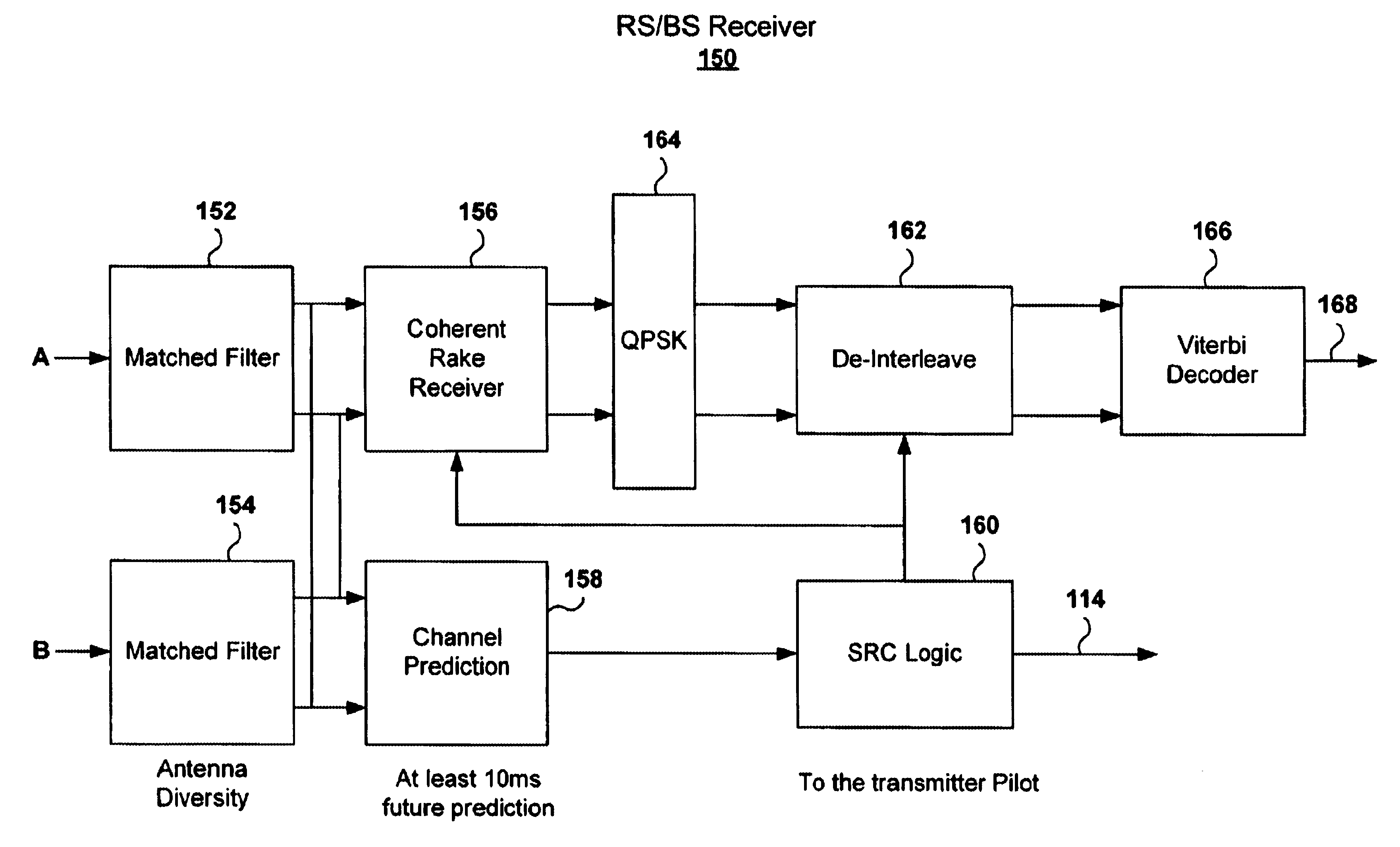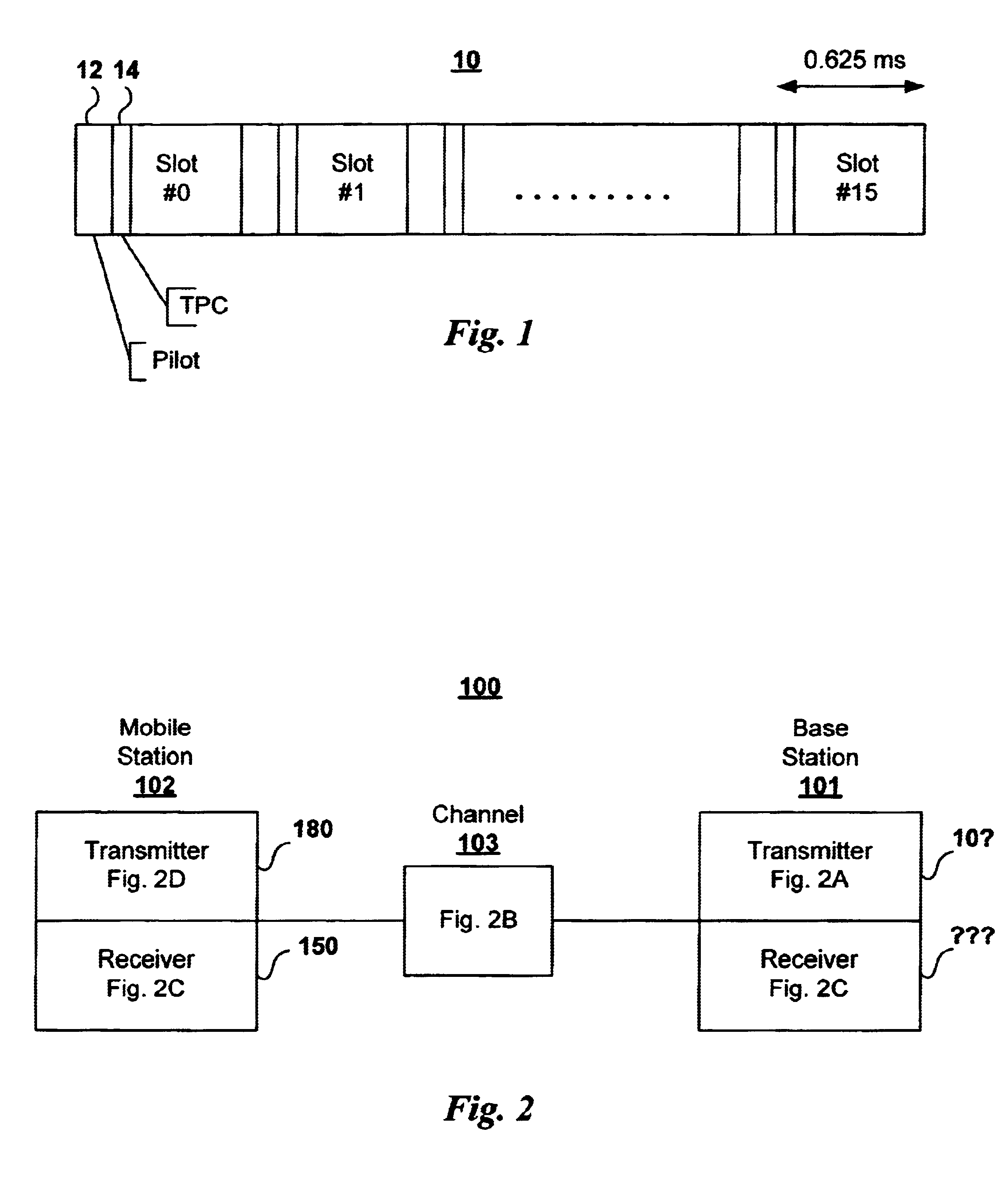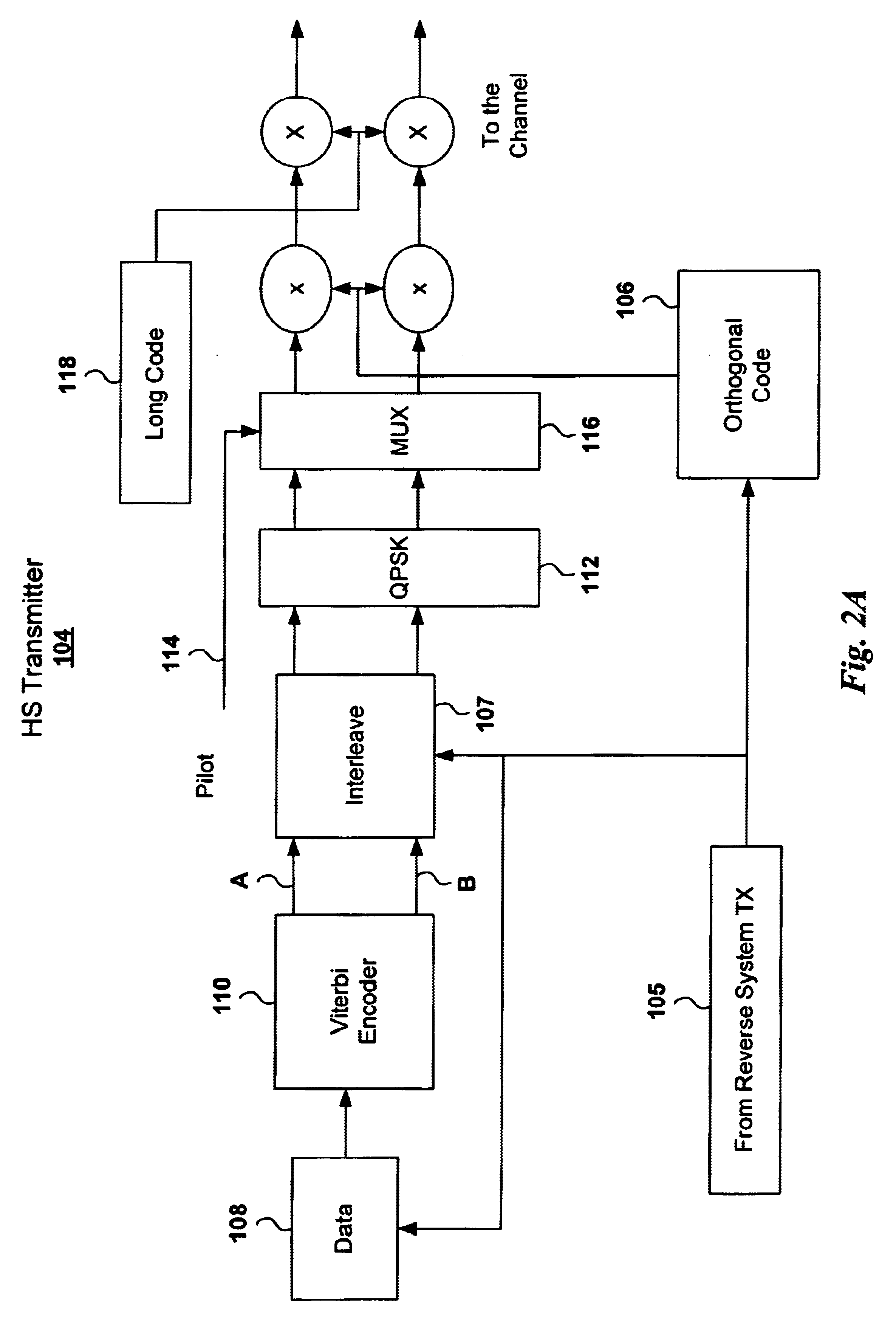Adaptive power control based on a rake receiver configuration in wideband CDMA cellular systems (WCDMA) and methods of operation
a technology of cdma cellular system and adaptive power management, applied in power management, electrical equipment, radio transmission, etc., can solve the problems of imposing high transmitter power requirement, failure to exploit the full potential of wireless system, and performance degradation
- Summary
- Abstract
- Description
- Claims
- Application Information
AI Technical Summary
Benefits of technology
Problems solved by technology
Method used
Image
Examples
Embodiment Construction
In WCDMA systems, symbols are transmitted using Quadrature Phase Shift Keying (QPSK) and Direct Sequence CDMA (DS-CDMA). The chip rate is 4.096 MHz. Each physical channel is organized in a frame structure, such that each slot consists of 2560 chips. This is described in an article entitled "Channel Estimation for the W-CDMA System, Performance and Robustness Analyses from a Terminal Perspective," by B. Lindof, C. Ostberg, and H. Eriksson, published in the IEEE Vehicular Technology Conference. Document 90. May 1999. FIG. 1 illustrates a W-CDMA frame structure 10 including time slots 0 through 15. Each frame includes pilot bits 12 and transmitter power control bits 14. For the down link, pilot symbols are time-multiplexed with data symbols and every slot starts with a group of pilot symbols (4 or 8) which maybe used to estimate or predict the channel and perform synchronization.
The present invention proposes a technique for adaptive modulation of a WCDMA system 100 shown in FIGS. 2-2D...
PUM
 Login to View More
Login to View More Abstract
Description
Claims
Application Information
 Login to View More
Login to View More - R&D
- Intellectual Property
- Life Sciences
- Materials
- Tech Scout
- Unparalleled Data Quality
- Higher Quality Content
- 60% Fewer Hallucinations
Browse by: Latest US Patents, China's latest patents, Technical Efficacy Thesaurus, Application Domain, Technology Topic, Popular Technical Reports.
© 2025 PatSnap. All rights reserved.Legal|Privacy policy|Modern Slavery Act Transparency Statement|Sitemap|About US| Contact US: help@patsnap.com



